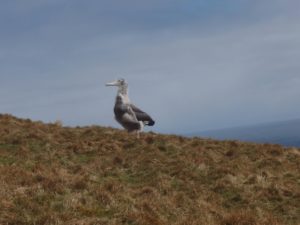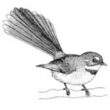Come fly with me as the mighty Wandering Albatross (Diomedea exulans) features this Fauna Friday. From 2007-2010, I had the privilege of monitoring Australia’s only breeding population of Wandering Albatross on sub-Antarctic Macquarie Island (located half-way between Tasmania and Antarctica in the Southern Ocean). Wanderers, as they are affectionately referred to, are the world’s largest flying bird with a whopping wingspan that can reach over 3m.
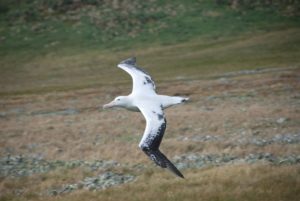
From a distance, Wanderers look mostly white, with black edges to their wings and some black in the tip of the tale. Up close, however, patterns of fine grey wavy lines on their white feathers (called “pencilling”) are visible. Sometimes the pencilling can be so distinct in younger birds that my field partner and I used the patterning to help identify individuals if their leg bands were not visible. However the pencilling does fade in older birds and the black markings on their wings and tail become whiter as they age – Wandering Albatrosses can live for well over 50 years!
Wandering Albatrosses are listed as Vulnerable under the Federal EPBC Act 1999 (Environment Protection and Biodiversity Conservation). The species has a circumpolar distribution and occurs throughout the Southern Ocean. One of the main threats to Wandering Albatross is the long-line fishing industry. Albatross usually forage by catching cuttlefish and squid from the ocean’s surface, and are therefore susceptible to being ensnared by the hooks used by long-line fishing-rigs. Conservation groups and research institutions are working with the long-line fishing industry to change methods to reduce by-catch of albatross.
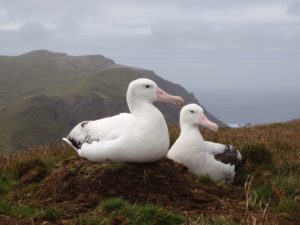
Wanderers are monogamous and form one of the strongest pair bonds of all albatross species. The breeding season on Macquarie Island begins in November/December. After being at sea for many months, the pair return to their natal breeding grounds, where they perform elaborate and graceful courtship rituals to strengthen their bond. The Wanderer pair also bond over nest building, and toil together over two days to construct a beautiful, huge (~1m across and 60cm high) bowl-shaped nest out of soft clods of soil and grass that they manipulate into shape with their bills.
The female lays a single egg. The egg is large (13cm long and 8 cm wide) and weighs up to 05.kg. Incubation last approximately 80 days and during this time the pair share incubation shifts while the other forages. Each parent has a brood patch on the underside of their belly, which is covered with fine downy feathers and helps transfer body heat to the egg or newly hatched chick. It is such a significant effort to raise a chick successfully that Wanderers breed every second year; although they will attempt to breed the next season if their egg fails to hatch.
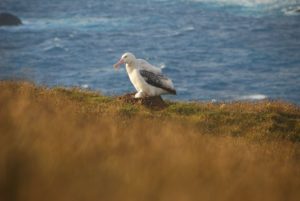
When the chick first hatches, is it extremely vulnerable and one of its parents are always present for a period called “brood guarding”. For the first month or so after hatching, the parents’ shifts at the nest shorten as they increase their foraging flights to bring back food for the chick. At around 35 days old, the chick gets too large for the brood patch and it is finally left at the nest by itself.
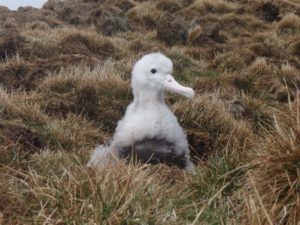
In a remarkable display of patience, steadfastness and trust, the chick will stay on the nest for the next nine months- all through a sub-Antarctic winter- awaiting feeding visits from its parents. Depending on how far the parents have to travels to forage, the chick may go without food for two-three weeks at a time.
Before fledging, the Wanderer chick will begin to walk short distances from the nest to exercise the flight muscles in its young virgin wings, strengthening them for their first flight. It can be quite comical to watch a chick spread out its huge wings for the first time and experiment with flapping (and folding them back up!) in the strong sub-Antarctic winds.
Wanderers are remarkable flyers and one of the largest ranging of the Albatrosses. Radio-tracking data has shown single foraging trips can cover up to 13,000km! Once the chick fledges and takes off to soar on the wild winds of the Southern Ocean, they will not return to land for up to 6 years, often circumnavigating the globe during this time – a truly remarkable ocean wanderer!
